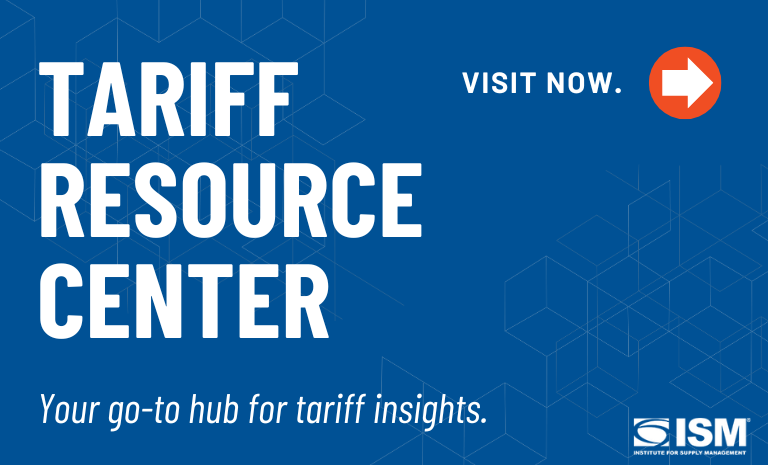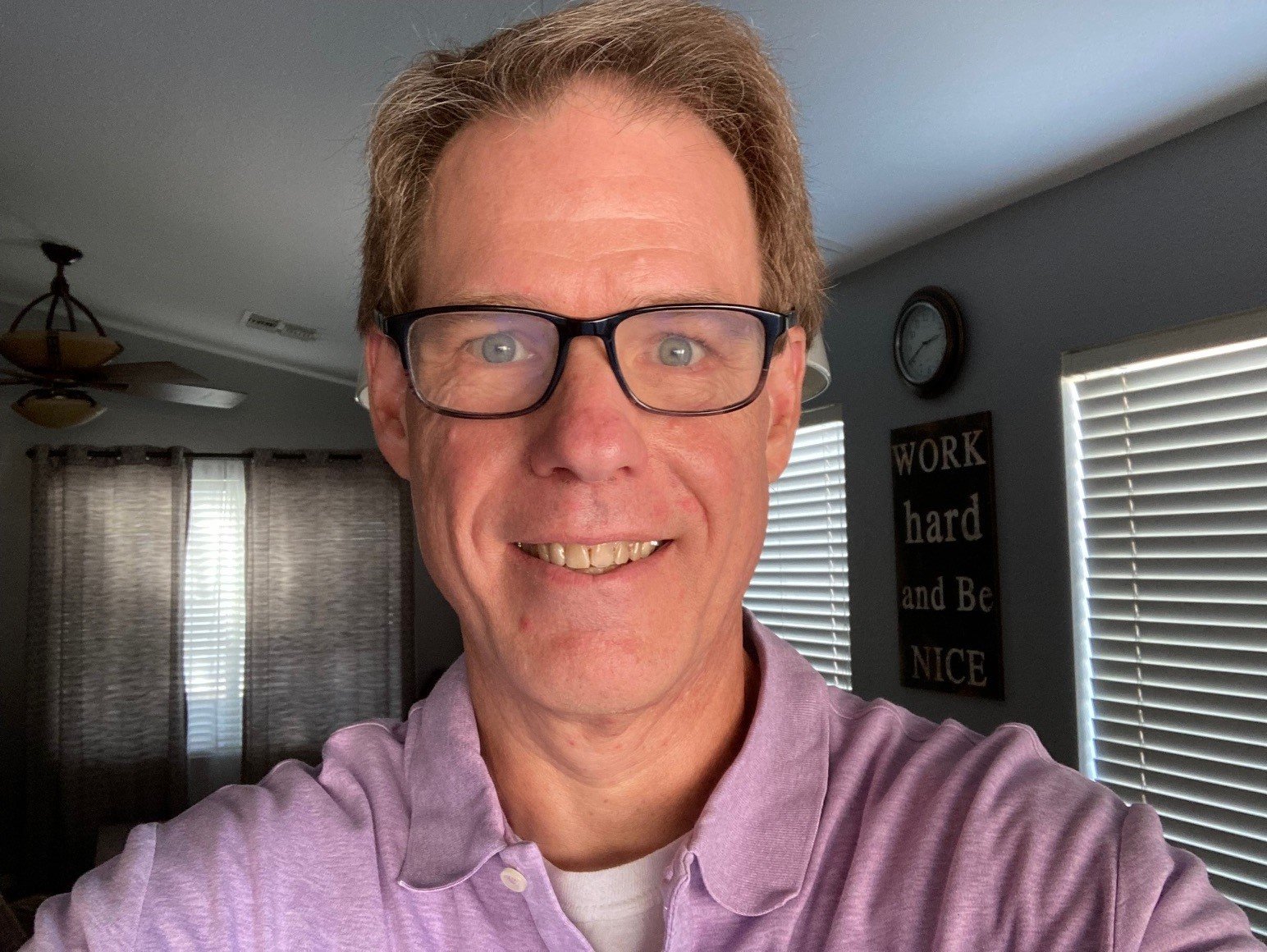Supply Chain Roundtable: Current Events, Cargo Theft and Classic Rock

Before diving too far into this edition of the monthly roundtable of experts from Institute for Supply Management® (ISM®), readers with a music streaming app might want to have it at the ready: The final question offers a potential soundtrack for supply managers.
Before they press play, our disc jockeys, er, panelists — Thomas W. Derry, ISM CEO; Jim Fleming, CPSM, CPSD, Manager, Product Development and Innovation; Paul Archiopoli, C.P.M., CPSD, CPIM, CMFGE, Subject Matter Expert; and Michelle Rohlwing, MBA, Manager, Product Development, Innovation and Learning — discuss potential impacts of the “One Big Beautiful Bill,” combating cargo theft and how to think strategically amid day-to-day drama.
Q: The sweeping federal budget bill was signed into law on July 4. While health-care executives are apprehensive, many in manufacturing and logistics had positive vibes. Are there supply chain implications to be aware of?
Derry: There are always puts and takes. Your perception of this new law probably depends on where you are standing. It phases out subsidies for certain renewable energy infrastructure, which is not helpful if you’re building wind turbines or solar farms. The return of tax deductions for interest paid on auto loans could help the domestic auto industry, making vehicles more affordable for consumers in the face of higher interest rates and tariffs. The permanent extension of the R&D tax credit removes barriers to accelerating innovation, which is critical to the U.S. economy.
Rohlwing: There are definitely pros and cons to this bill. From an overall perspective, this bill is encouraging domestic sourcing and sustainable practices but will also cause challenges for those corporations that rely heavily on global supply chains. These companies will have to evaluate their current sourcing strategies and balance the opportunities and the risks. This is something businesses should be doing regularly.
Archiopoli: The “One Big Beautiful Bill” (which is a product of political compromise) delivers some important economic building blocks that have the potential to boost gross domestic product (GDP) and build prosperity from the bottom up and top down — increasing economic activity and, subsequently, supply chain activity. Among the examples: (1) codifying the current tax rates versus allowing a significant tax increase, which should keep money in consumer pockets and drives GDP growth, (2) enhancing “expensing” rules to encourage business (of all sizes) to spend more freely, (3) bringing manufacturing back to America, (4), removing obstacles to energy production, including nuclear power and (5) rebuilding logistics infrastructure.
Fleming: There are some positive implications for corporations and supply chains. While there is never a perfect bill, we must focus on the possibilities and wins. Tax breaks, deductions and incentives, closing of loopholes and incentivizing R&D are just a few. And while there are going to be some negatives and challenges, we are part of a profession that is innovating and evolving at exponential rates.
Q: Cargo crime has been in the headlines a lot as of late, and thieves have been getting more sophisticated. What can procurement organizations do to combat theft, and what technologies and resources are available?
Fleming: It is unfortunate that enterprise continues to be a focus area of sophisticated crime rings, but technology continues to evolve to complicate the lives of the criminals. Here are seven technologies being applied to help secure global supply chains: (1) blockchain — immutable record-keeping for transactions and product movement that prevents fraud, counterfeiting and tampering by ensuring every step in the supply chain is transparent and verifiable, (2) Internet of Things sensors — real-time tracking of goods, vehicles, and environmental conditions, detecting theft, unauthorized access or deviations from planned routes or conditions, (3) artificial intelligence and machine learning can identify suspicious patterns like unusual shipping routes or delays and flag potential fraud or theft, (4) computer vision and surveillance of warehouses, ports, and transit hubs, (5) cybersecurity tools that protect digital infrastructure and data from breaches, (6) digital twins — virtual replicas of supply chain systems for simulation and monitoring, helping identify vulnerabilities and test responses to disruptions or criminal activity and (7) geofencing and smart contracts that reduce human error and fraud by enforcing rules automatically.
Archiopoli: To Jim’s point, there are many technological tools available to help blunt or deter criminal activity. One productive way for procurement organizations to help is to partner with internal and external logistics partners to understand security needs and enable study, procurement, and deployment of the available technology.
Derry: Jim’s response is excellent and comprehensive. I want to add that I know companies avoid certain locations and truck stops that are known to be more prone to theft. It’s low tech, but effective.
Rohlwing: I’ve seen some physical solutions to deter theft such as smart seals or biometric access control to cargo and storage areas. Outside of these solutions, partnering and collaborating with local law enforcement and keeping a pulse on what current trends are can also help.
Q: ISM has an upcoming webinar focused on turning procurement from a “cost center to growth driver.” In a time of generally stretched resources, how can organizations get past getting bogged down in day-to-day duties and putting out fires to thinking and acting strategically?
Derry: In today’s environment of dealing with seemingly constant crises, it’s all too easy to focus on solving the urgent problem on your desk. A more strategic and impactful way of thinking, to my mind, is orienting the function to what matters most to the company. For example, how much revenue does my category support? How much market share? What actions can I take to increase the operating margin? What innovations can I source that will lead to increased revenue or revenue from new or adjacent markets? We will always be called on to put out fires. But that’s far from the totality of the value we should deliver to the company.
Fleming: I had the opportunity to attend a workshop years ago titled “The Corporate Athlete.” It focused on employees thinking of themselves in terms of a professional athlete. The analogy used was the best athletes in the world make time to train and prepare. The more these athletes build training into their life, the longer their career. This workshop articulated professional athletes have a career span of 10 years, while corporate employees are looking at 40 years (a daunting thought). It also applies to our supply chain profession. When we are able to create a mental model that incorporates training into our busy schedule, it is amazing what occurs. If we carve out 2.5 percent of our workweek (an hour per week), we can build 40 to 50 hours per year of personal development. Leaders can do the same with their teams. This is not an impossible task, as CAPS Research benchmark data has indicated the best corporations average training of approximately 30 hours per employee per year.
Archiopoli: Day-to-day customer service tasks and urgent issue resolution will always be a significant and essential part of procurement — this is inherent to the transactional nature of the role. It’s also worth noting that procurement teams typically deliver strong bottom-line returns on investment. In my experience, the key to shifting toward a more strategic focus is creating capacity within supply chain organizations. This can be achieved by improving processes and reducing variability. Process improvements can take many forms, including sales and operations planning, advanced planning systems, ERP, e-commerce and advanced analytics. The goal is to eliminate non-value-added activities and waste, freeing up time for higher-value work. However, it’s important to recognize that increasing capacity is sometimes misinterpreted as an opportunity to reduce headcount. Lastly, I want to echo Jim’s point: Each of us has a personal responsibility to grow our knowledge and skills in supply chain. Staying relevant means continuously learning and evolving in the profession.
Rohlwing: There will always be fires to put out in procurement, but I think now more than ever, it is important to streamline processes as much as possible and implement systems that allow increased visibility. It is also important for all supply chain professionals to do what they can to continually improve and develop themselves. Continuous learning equals continuous improvement.
Q: You are giving a presentation on the current state of supply chains and the profession and have one song to choose as a soundtrack. Which song are you loading into the slideshow?
Fleming: “Under Pressure” by Queen and David Bowie would be my first choice, followed by “Welcome to the Jungle” by Guns N’ Roses. The overall theme: There are lots of opportunities for those who thrive in a fast paced, chaotic environment.
Rohlwing: My first choice would've been “Under Pressure,” but Jim beat me to it. So instead, I’ll choose “The Chain” by Fleetwood Mac. To me, this song captures the interconnectedness of supply chains but also how easily a chain can break and cause a domino effect of issues.
Derry: Either “Nowhere to Run” by Martha and the Vandellas or “How Do You Like Me Now?” by Toby Keith.
Archiopoli: “Roll with the Changes” by REO Speedwagon. The most predictable element of supply chain work is change. To thrive in the profession, the practitioner must be comfortable with change — in fact, the most successful individuals are agents of well-managed and productive change.

